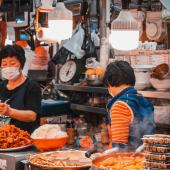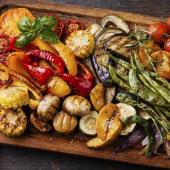Molecular Cuisine
Herring as a foam, mousse steak and ice cream with liquid nitrogen. All these dishes of molecular gastronomy can surprise even fastidious gourmets. Why is the chef remake in a chemical laboratory that modern?
Physicists at the stove
A British nuclear physicist named Nicholas Kurti paved the way for the beginning of molecular gastronomy. He took part in the development of an atomic bomb during World War II, and already in 1969, he taught "Physics in the Cuisine" in Oxford. Since then, the interest in the new style of cooking has grown significantly. In 2002, for the first time the world´s best restaurant became a restaurant with molecular gastronomy ("elBulli" Catalan Ferran Adria), and since it is one of the main economic activities. There are usually molecular cuisines available in the assessment of the 50 best restaurants in the world by S. Pellegrino,
Familial food in an unusual form
Normally, a molecular meal consists of 15-30 dishes. Here, every dish is no more than a tablespoon. This is a feature of the kitchen in order to determine the intensity of taste, and not to make the guests full.
Food in the form of foam (called espuma) are the hallmarks of classical molecular restaurants and characterize their approach best: It is a challenging technique not to burden the resulting essences with unnecessary fats. This aroma is extracted in pure form. According to the legend, foams were first introduced on the menus in the restaurants of Ferran Adria, inspired by the foam on the bottom of a glass with fresh juice, which drank the cook in a bar in Barcelona. Molecular foam can be extracted out of anything - even of meat, fruits and nuts.
The laboratory in the kitchen
How familiar are the meals with the unusual appearance? The chefs of molecular gastronomy use devices for their meals that are commonly used in chemical laboratories. For example, the centrifuge separates the mass and the different densities of the fluid by centrifugal force. Liquid nitrogen is used to freeze the ingredients at once. For these purposes, dry ice is made.
Another kind of molecular gastronomy - Sous-vide - is a special cooking method in a water bath. Products are rolled in a vacuum bag for a long time (sometimes more than 72 hours), and prepared in water at a temperature of about 60 degrees or less. Meat that has been cooked "sous-vide", provides an amazing softness, juiciness and versatile flavor.
Interestingly, the chefs in molecular gastronomy prepare comparatively simple meals. Its main principle: To deconstruct the familiar food for a long time, and to prepare it in an unusual way. Chefs split the molecules as a foam, gel and mousse tortilla, soda, dim sum and a salad "Olivier".






- Reply
Permalink